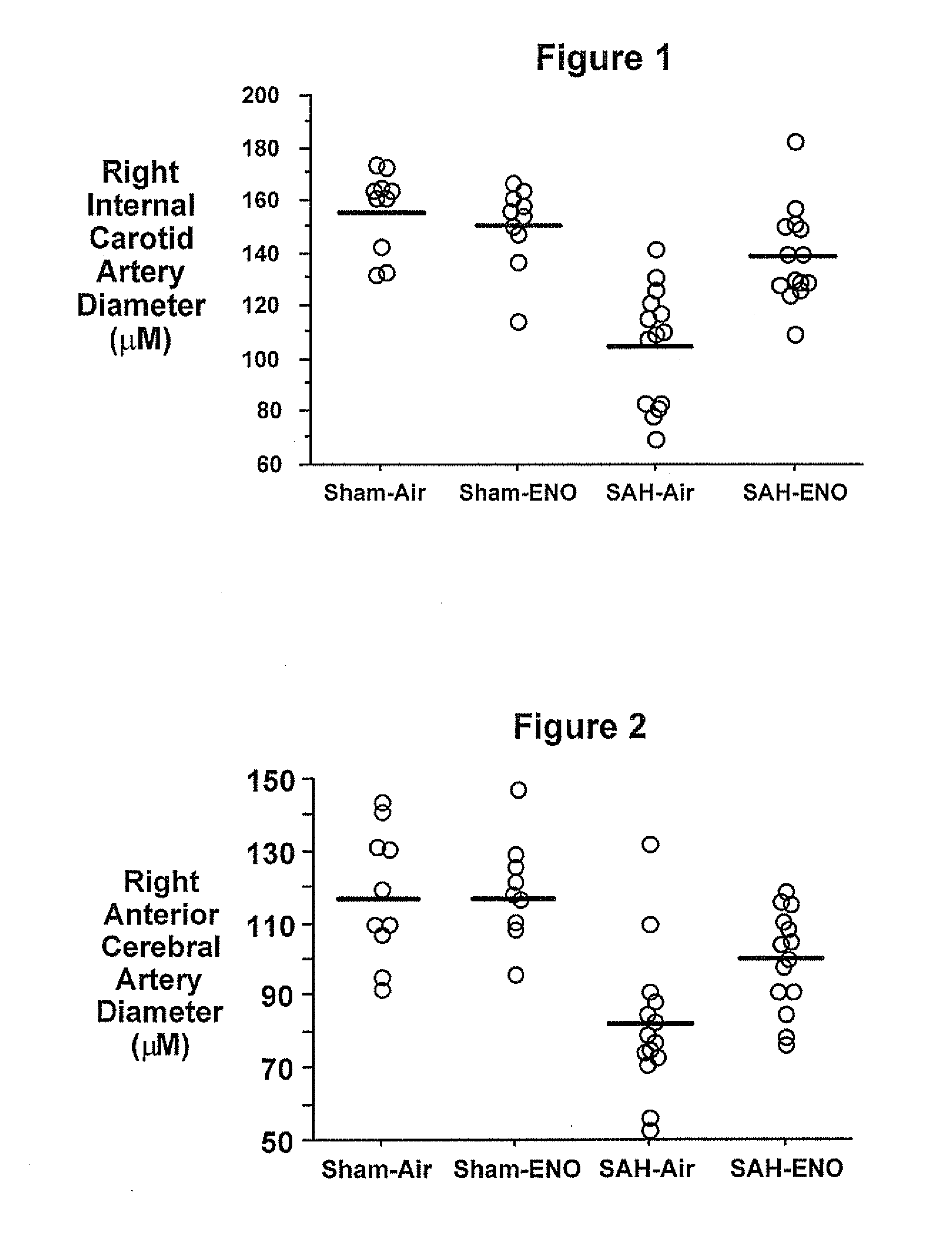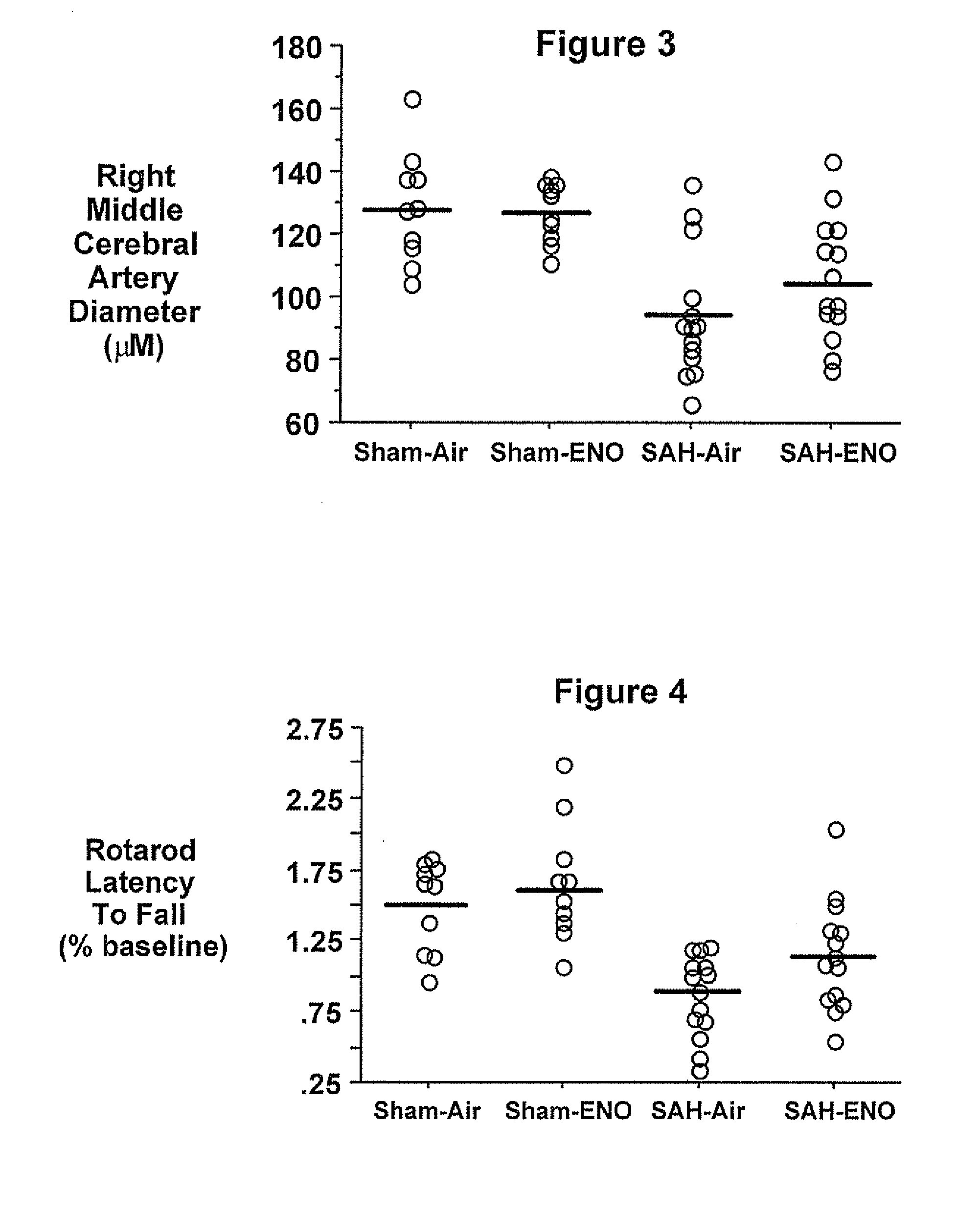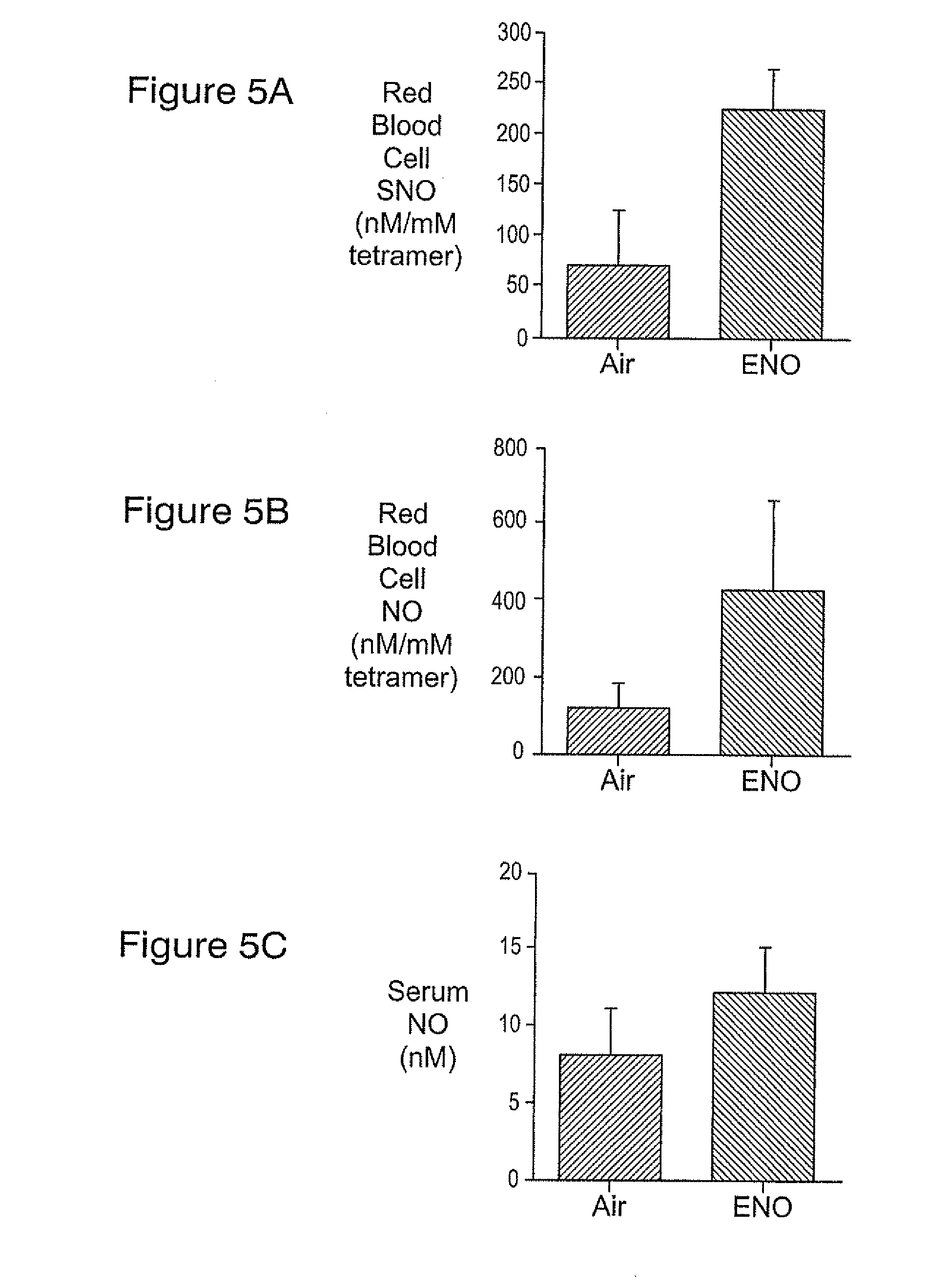Treating patients with subarachnoid hemorrhage
a subarachnoid hemorrhage and patient technology, applied in the direction of nitro compound active ingredients, extracellular fluid disorder, peptide/protein ingredients, etc., can solve the unexpected and synergistic effects of organic nitrites when combined with organic nitrites, and achieve the effect of reducing the likelihood or severity of vasospasm and subsequent ischemic results, attenuating or preventing pathological cerebral vasoconstriction
- Summary
- Abstract
- Description
- Claims
- Application Information
AI Technical Summary
Benefits of technology
Problems solved by technology
Method used
Image
Examples
example 1
Background Example 1
[0053]The following Background Example provides a set of method and procedures relevant to study the effects of nitric oxide. C57BL / 6J mice (Jackson Laboratory, Bar Harbor, Me., USA) were fasted from food for 12 h to control their plasma glucose concentration. Anesthesia was induced in a chamber with 5% halothane in 50% O2 / balance N2. The trachea was intubated and the lungs were mechanically ventilated. Pericranial temperature was maintained at 37.0°±0.5° C. using a heat lamp and a pericranial needle thermistor. Anesthesia was maintained with 0.6%-1.0% halothane in 50% O2 / balance N2. By surgical incision, a catheter was placed in the left femoral artery. Mean arterial blood pressure (MAP) was maintained between 60-80 mmHg throughout surgery by adjusting the inspired halothane concentration. Arterial pH, PaCO2, and PaO2 were measured immediately before SAH.
[0054]SAH was generated in each subject as follows. The right common carotid artery was exposed by a midline ...
experiment a
[0063]Body weight prior to surgery was similar between groups (sham=33=4 g, SAH=33=3 g), but at three days after surgery, body weight was reduced in the SAH group (sham=32+7 g; SAH=29+3 g, p<0.05). Values for PaCO2 (sham=34±3 mmHg; SAH=33+3 mmHg), PaO2 (sham=168+21 mmHg; SAH=138+31 mmHg) and arterial pH (sham=7.24+0.01; SAH=7.27+0.05) were similar between groups. A decrease in vascular diameter was observed after SAH in the proximal and distal MCA and distal ICA segments at a pressure of 60-80 mmHg. At 40-60 mmHg, a decrease in diameter after SAH was observed in the distal ICA only (Table 2). No difference between sham and SAH groups was observed in any segment at 100-120 mmHg. A main effect (p<0.05) for increasing diameter as a function of increasing perfusion pressure was present in both sham and SAH groups in most vascular segments. This was most evident between the perfusion pressure ranges of 60-80 and 100-120 mmHg (Table 2). Without gelatin-ink microfiltration, all four mice d...
experiment b
[0064]Physiologic values were similar to those reported for Experiment 1. SAH caused a 57% reduction in proximal MCA diameter (SAH=38+10 mm, n=8; sham=88+12 mm, n=7, p<0.01). Basilar artery diameters were similar between sham (165+31 mm, n=7) and SAH (171=15 mm, n=8) animals (p=0.62). Neurologic function was worsened three days after SAH (11 (7-17)) versus wild type shams (27 (27)), p<0.01). SAH grade was 4 (3-4) for SAH mice. No hemorrhage was observed in the sham animals. When both sham and SAH animals were included, proximal MCA diameter correlated with neurological score (p<0.01). Both proximal MCA diameter and neurologic score correlated (p<0.01) with a SAH grade. These methods and procedures can be used to study the effects of ethyl nitrite such as in Background Example 2.
PUM
| Property | Measurement | Unit |
|---|---|---|
| Time | aaaaa | aaaaa |
| Time | aaaaa | aaaaa |
| Time | aaaaa | aaaaa |
Abstract
Description
Claims
Application Information
 Login to View More
Login to View More - R&D
- Intellectual Property
- Life Sciences
- Materials
- Tech Scout
- Unparalleled Data Quality
- Higher Quality Content
- 60% Fewer Hallucinations
Browse by: Latest US Patents, China's latest patents, Technical Efficacy Thesaurus, Application Domain, Technology Topic, Popular Technical Reports.
© 2025 PatSnap. All rights reserved.Legal|Privacy policy|Modern Slavery Act Transparency Statement|Sitemap|About US| Contact US: help@patsnap.com



